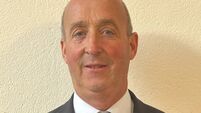‘Extensive interest’ in reformed and breading technologies at centre
“We have received a large amount of queries to date regarding forming and breading technologies for whitefish and shellfish species,” said John Fagan, senior technologist of BIM.
“In response to industry requests, we have secured a commercial forming, breading, and flash-frying line from Deighton, UK, and this is backed-up by a Baader 600 meat separator so we can look at both whole-fillet and recovered meat products across a wide variety of species.
“We found that by using a Baader 600 meat separator, up to 4kg or previously unused and unavailable seafood flesh can be recovered from 10kg of previously discarded material, eg fish frames. This meat is of high quality and can be used as raw material to develop value-added reformed products.”
BIM is testing multi-matrix combinations of fish, binders, breading, and coating systems on its Deighton forming and breading line. The Seafood Development Centre gives industry partners access to up to €1m worth of technology and a team of experts to develop products before committing to any capital expenditure.
The centre is working with ingredients suppliers including Healy Ingredients, Dutch Protein Services, and Kerry Ingredients. The sector is worth €810m.
The centre is involved in commercial trials combining such meats with binders, flavours, and toppings to develop reformed fish cakes, nuggets, and convenience products. Previously under-utilised fish species such as blue whiting and boarfish are being explored.
Mr Fagan said: “The challenge is to combine highly nutritional fish species in a way as to deliver maximum flavour, texture and quality for target markets and to use the abundant fish species we have access to in combination with highly nutritional and healthy clean label ingredients.”









